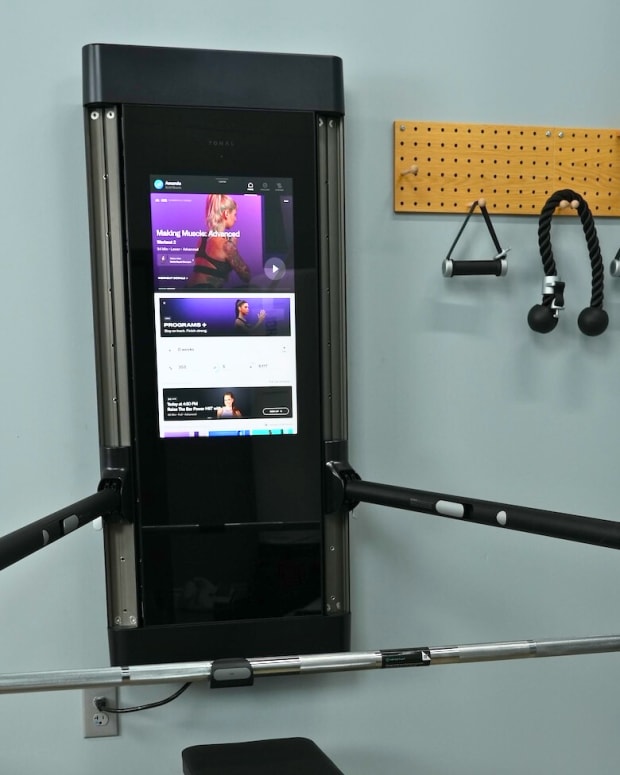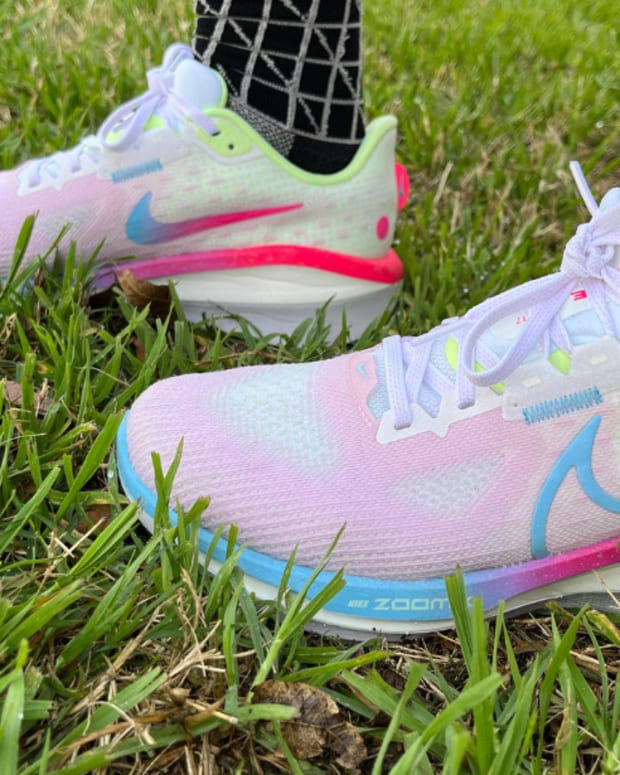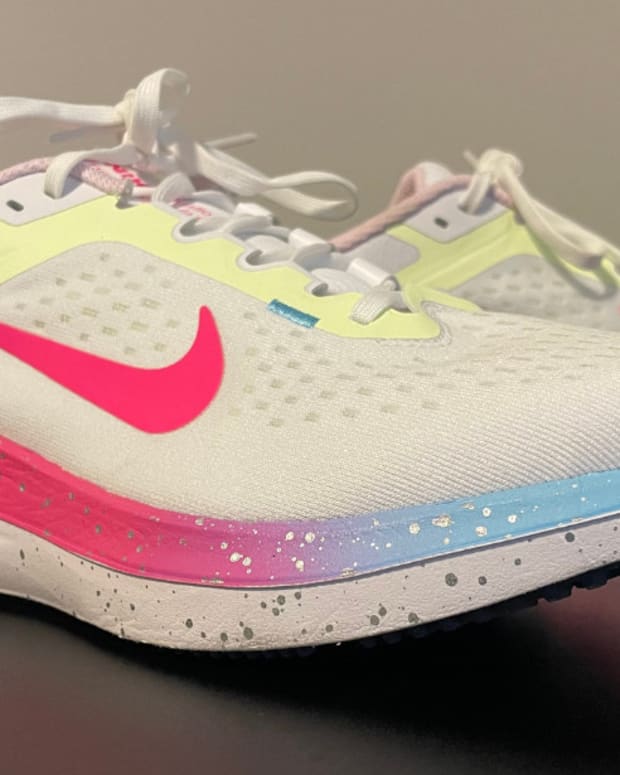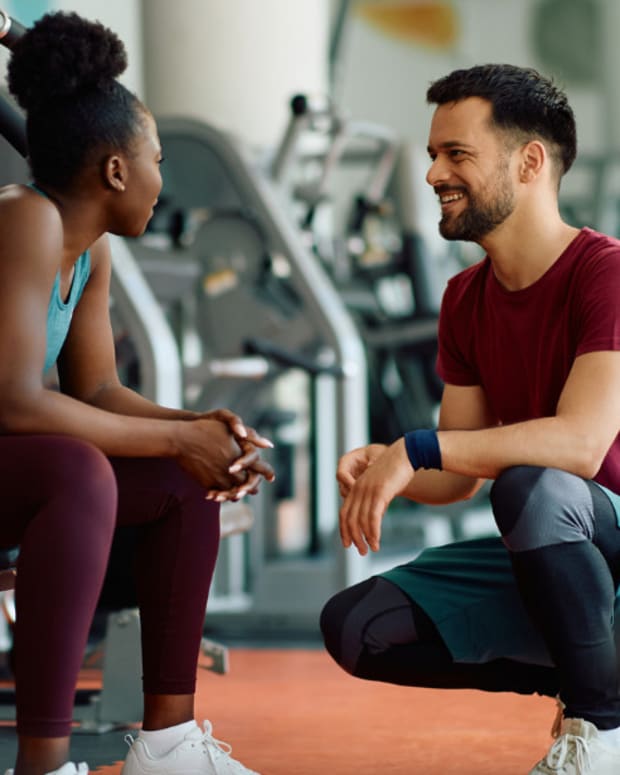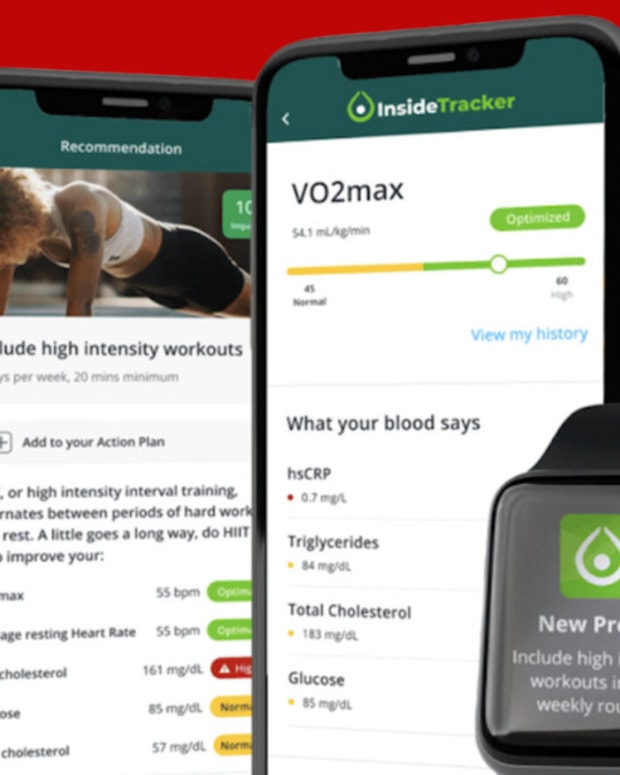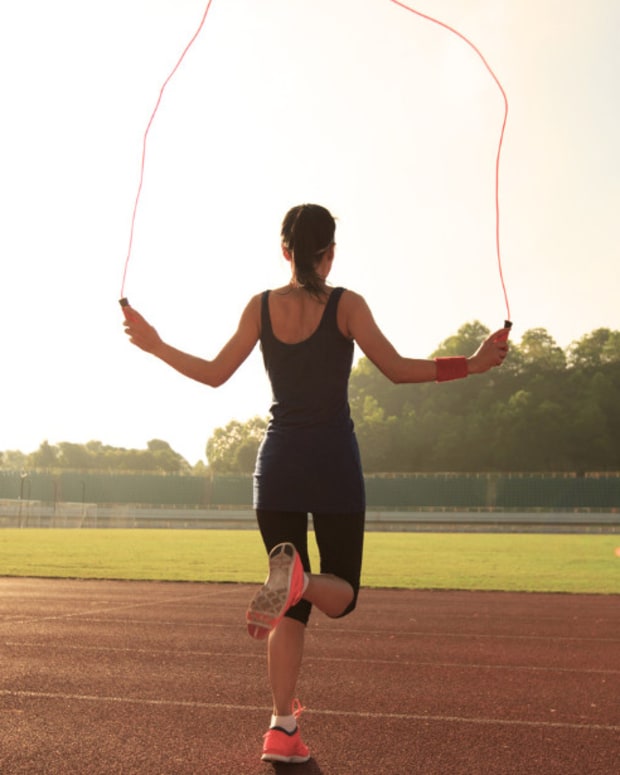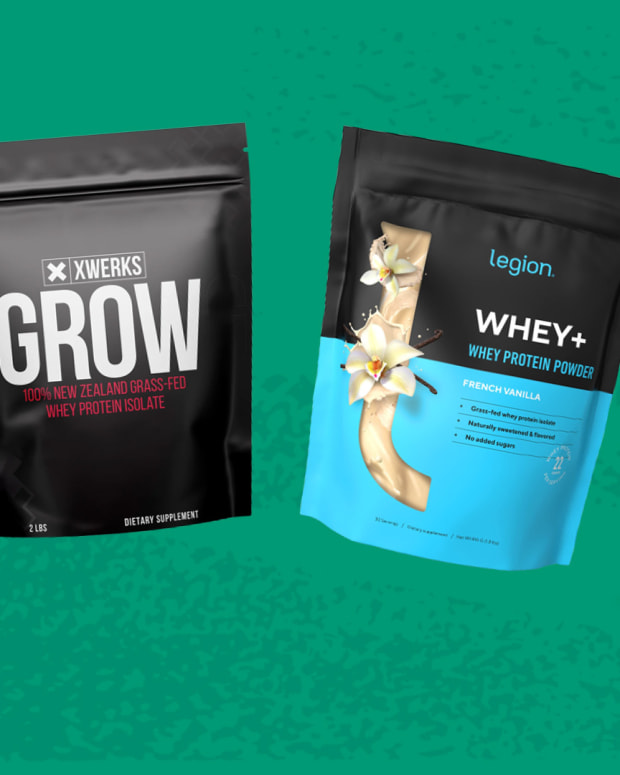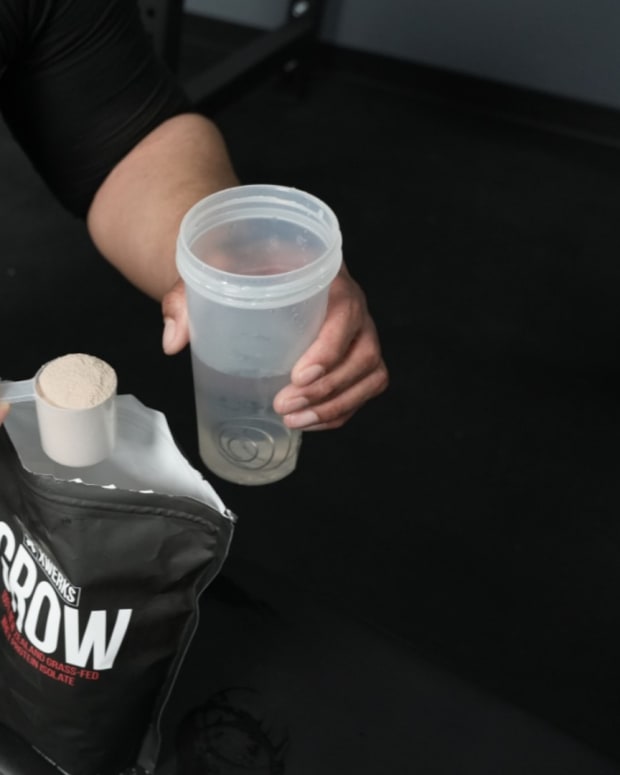The products featured in this article have been independently reviewed. When you buy something through the retail links on this page, we may earn commission at no cost to you, the reader. Sports Illustrated editorial staff are not involved in the creation of this content. Learn more here.
It may be tempting to reach into your sock drawer and pull out a trusted pair of regular cotton socks to wear on your next run, but while these socks are great for everyday use, they’re not the best option for running. Cotton is ultra-absorbent, so not only does it hold onto a lot of moisture (and therefore makes your feet feel sweaty), it can also retain heat. That’s why running socks in 2024 are made out of more breathable materials like quick-drying merino wool, which helps prevent blisters, or durable blends of synthetic fabrics like nylon, polyester and spandex.
Many high-quality running socks also come with features like compression to support long runs or cushioning to reduce impact. While it may come as a surprise, the simple running sock is just as important as a comfortable pair of running shoes for these reasons and beyond. If we haven’t convinced you yet, there’s plenty of reason why you should ditch cotton socks in favor of a good pair of running socks to keep you comfortable, blister-free and cool or warm. Whether you’re a beginner or a pro runner, these six best socks for running deserve a spot in your drawer.
Our Picks for the Best Running Socks of 2024:
- Best Running Socks for Men: Nike Spark Lightweight
- Best Running Socks for Women: Feetures Elite Ultra Light No Show Tab
- Best Trail Running Socks: Salomon X Ultra Ankle
- Best Running Socks to Prevent Blisters: Injinji Run Midweight No Show
- Best Cushioned Running Socks: Thorlo Maximum Cushion Rolltop Running Socks
- Best Winter Running Socks: Nike Trail Running Socks
Best Running Socks for Men: Nike Spark Lightweight
Key Features:
- Price: $18 for two pairs
- Material: Nylon, spandex and polyester
- Cushioning: Light
- Height: Ankle
Our best running socks for men are Nike Spark Lightweight, a thin running sock designed to wick sweat away while keeping your feet cool and dry. Made out of a synthetic fabric blend of nylon, spandex and polyester, these ankle socks will have a snug feel thanks to the arch band contours around the foot area. They also have gentle cushioning and light arch support with a barely-noticeable plushness in the footbed and ankle, making this pair of socks a great option for runners who love a natural feel to their runs. Another detail we enjoy for road running in particular are the reflective strips that help you stay visible—an important safety feature.
Pros:
- Mesh fabric keeps your feet cool and dry
- Arch band contours create a secure fit
- Extra yarn cushions footbed and ankle
- Reflective strip for road visibility
Cons:
- Fits slightly small
Best Running Socks for Women: Feetures Elite Ultra Light No Show Tab
Key Features:
- Price: $18 for one pair
- Material: Nylon and spandex
- Cushioning: Light
- Height: No-show
Next up are our best running socks for women, the Feetures Elite Ultra Light No Show Tab. These lightly cushioned, no-show running socks will be barely visible above your running shoes and include numerous technologies that make them an excellent choice for running workouts. The No Show Tab socks have zone-specific targeted compression to give you cushioning in high-impact areas, plus an anatomical design that lets them conform to both left and right feet structures for extra blister protection. Plus, they’re made with an iWick fabric that helps wick moisture away to keep your feet cool and dry, and a non-irritating toe seam for comfortable long-distance runs. We also love that these no-show running socks come in 12 color options.
Pros:
- Targeted compression for high-impact areas
- Precise custom fit with anatomical design
- Non-irritating toe seam for extra comfort
- No-show height means no sock bunching
Cons:
- Expensive
Best Trail Running Socks: Salomon X Ultra Ankle
Key Features:
- Price: $9.98 for one pair
- Material: Polyamide, merino wool and elastane
- Cushioning: Medium
- Height: Ankle
Salomon's X Ultra Ankle is a medium-cushion ankle running sock that’s a versatile option for trail runners of all experience levels. These tough socks have a slightly snug fit and partial compression, in addition to a mid-range warmth that can still keep you cool on warmer runs, but warm enough on frigid days. Whether you’re hitting the trail in the summer or fall, these socks’ quick-drying merino wool and synthetic fabric blend keeps moisture away. As a unisex design with an ankle height that eliminates bunching issues, Salomon X Ultra Ankle fits both men and women. It also has a flat toe seam for extra comfort, plus elasticated stretch for a secure fit.
Pros:
- Unisex design
- Elastane creates secure fit
- Reinforced heel with shock absorption
- Medium warmth suitable for cold weather
Cons:
- Might be too warm for very hot days
Best Running Socks to Prevent Blisters: Injinji Run Midweight No Show
Key Features:
- Price: $15 for one pair
- Material: CoolMax EcoMade, nylon and lycra
- Cushioning: Medium
- Height: No-show
The benefit of wearing a high-quality pair of toe socks like Injinji Run Midweight No Show is that each toe is separated, which eliminates the risk of blisters, skin-on-skin friction and hot spots. These medium-cushioned toe socks have a versatile no-show height perfect for high-impact running, an ankle tab to prevent slipping and integrated arch support with a supportive band. Yet one of the features we love most about these socks is the CoolMax fabric, which paired with nylon and Lycra makes these socks excellent at wicking away moisture. A ventilated mesh top also boosts breathability, while extra cushioning on the footbed helps increase comfort level.
Pros:
- Toe separation prevents blisters and friction
- Supportive band offers arch support
- Ventilated mesh top for extra breathability
- Ankle tab helps prevent slipping
Cons:
- Only one color option
Best Cushioned Running Socks: Thorlo Maximum Cushion Rolltop Running Socks
Key Features:
- Price: $47.97 for three pairs
- Material: Thorlon acrylic fiber, nylon and elastic
- Cushioning: Maximum
- Height: Ankle
If you’re looking for an ultra plush pair of running socks, Thorlo's Maximum Cushion Rolltop is your best bet. These unisex ankle running socks come with an ankle tab for additional stability, moisture-wicking synthetic fibers and cushioning over the forefoot to help prevent toe injury. They also have a flat knit instep and arch cushioning for a snug and comfortable fit; this offers protection in common strike zones where blisters, foot pain and discomfort are common. While these definitely aren’t thin socks, the extra thickness is a great choice for people prone to injury.
Pros:
- Cushioning in critical strike zones
- Toe cushioning helps prevent toe injury
- Flat knit instep for more comfortable run
- Synthetic fiber blend wicks moisture
Cons:
- Must buy at least $65 worth of products for free shipping
Best Winter Running Socks: Nike Trail Running Socks
Key Features:
- Price: $30 for one pair
- Material: Nylon, wool, polyester and spandex
- Cushioning: Medium
- Height: Crew
Winter running means layering up, and you’ll want an extra warm pair of running socks to help you navigate frigid temps. Made out of breathable synthetic fabrics and temperature-regulating wool, these crew socks are both wicking and warm at the same time. They’re designed for off-road runs that are wet and rocky, and a heel tab helps keep the elements out of your socks. A mesh layer between the grip also promotes ventilation and moisture drainage, so you don’t have to worry about running through slush. Heavier yarns around the arch offer arch support, while additional fabric at the heel helps keep your feet securely in your shoes (and socks).
Pros:
- Mesh layer allows for moisture drainage
- Wool-blend fabric helps regulate temperature
- Heel tab keeps elements out
- Designed for wet and rocky terrain
Cons:
- High price per pair
- Some customers complain of bunching
How to Choose the Best Running Socks for You
No two running socks are made the same, and there’s no one universally-perfect running sock for everyone. The best materials, height, cushioning and even price will ultimately depend on your needs and what types of running you love to do (and, of course, what feels comfortable to you). Here’s how to choose a running sock that’s right for your runs, budget and comfort.
Materials
There are two main groups of fabric used in running socks: wool or synthetic fabrics. Brands generally avoid cotton because it traps heat and moisture, which increases friction between your feet and socks. This puts you at risk for painful blisters or chafing. Wool, particularly merino wool, is a popular choice because it’s versatile for year-round wear; it’s breathable enough to keep you cool, thanks to good moisture management, but can also regulate your temperature to keep your feet warm on cold winter runs. It does a great job at preventing odor as well. Some people find that merino wool is too warm for very hot weather, but this is a personal preference.
Synthetic fabrics like nylon or polyester, on the other hand, tend to cost less and offer better value. They’re also more durable than merino wool and typically last longer. These fabrics generally offer good compression as well, especially if the socks have a blend that includes spandex. Their lightweight construction makes them breathable and fast drying, too.
As to which type of material is best for you, it’s important to consider what type of environment you plan to run in (particularly warm versus cold), your budget and what will feel most comfortable for you to wear.
Height
Running socks typically come in four heights: no-show, ankle, quarter and crew. No-show socks are the shortest, while crew socks are the tallest. Some marathon runners also wear knee-high compression socks that offer extra support (and help encourage blood flow), but the majority of running socks come in the four heights above. No-show socks are low-cut and sit below the ankle bone, ankle socks sit at or just below the ankle bone, quarter socks sit above the ankle bone and crew socks sit at or just below the mid-calf. You’ll also find different variations of these lengths, such as mini crew socks that are slightly shorter than regular crew socks.
As for which running sock height is best for you, this is a personal preference. Sock height will only make a true difference for trail running that requires high socks to protect your legs from dirt, grass and insects. Anyone looking for compression will want a taller, snug-fit sock, while those seeking out maximum breathability for warm weather will want no-show or ankle socks. Since I have a narrow heel that slips out of ankle socks, I personally wear quarter-length socks because they’re more comfortable for me to run in, but my husband, who is an avid runner, swears by crew socks. Unless you trail or marathon run, sock height won’t affect performance.
Cushioning
Like running shoes, running socks come in different levels of cushioning. A sock with extra cushioning will be a thicker sock, while a sock with no or light cushioning will be much thinner. No cushion socks mean that the sock fabric has no additional padding, while light cushion socks will have a subtle plush feel, but will still be thin enough for you to feel the shoe beneath you. Then there are medium cushion socks, which have substantial padding, and maximum cushion socks, which have the highest level of cushioning with thick and plush underfoot padding.
Cushioning plays an important role in protecting high-impact zones on your feet and decreasing friction between your feet and shoes. If you’re looking for extra shock absorption or you simply prefer a plush feel to your runs, a sock with additional cushioning will be best. Lighter socks, on the other hand, are best for those with tighter running shoes, or who prefer a natural feel to their runs. Still, it’s always a good idea to purchase running socks with some level of cushioning.
Many long-distance runners wear cushioned running socks that are made out of a moisture-wicking material, like merino wool or nylon, to pair with long-distance running shoes. This specific combination serves an important purpose. The breathable fabric not only keeps feet dry during long runs, but improves ventilation as well.
Price
It depends on whether you buy a pack or individual socks, but running socks will probably be one of your more affordable purchases for running gear. Most running socks will typically cost you around $10 or up to $40 for more high-end performance socks. A good pair of running socks will also last you anywhere from three to six months, give or take, so be sure to factor in how often you’ll need to replace your socks when you think about your budget for running gear. Don’t forget to consider additional expenses as well, like subscriptions to running apps.
FAQs
What kind of socks do long distance runners wear?
Many long-distance runners wear cushioned running socks, generally crew socks. The sock cushioning provides underfoot protection and helps prevent blisters, while the taller height wicks away leg sweat. Seamless toe socks are another popular choice amongst long-distance runners, since toe seams can become surprisingly uncomfortable and noticeable during longer runs.
Do good running socks make a difference?
Good running socks can make a big impact on your run. While you can get away with wearing cotton socks every once in a while, running in a high-quality pair of running socks designed specifically for running can keep your feet blister-free, reduce friction and lessen impact on your joints and muscles, especially if you run on a treadmill. If you’ve never worn running socks before, you’ll likely feel a substantial difference while wearing them as opposed to regular socks.
Should running socks be cotton or polyester?
It’s best to avoid wearing cotton socks when running because cotton retains moisture and will likely make your feet feel sweaty and hot, increasing the risk for blisters and chafing. Synthetic materials are a much better choice for running socks because they wick away sweat, have better durability than cotton and are also more breathable. Wool is another popular choice.
How tight should running socks be?
Running socks should fit like a good pair of running shoes in that they should be snug, but not too tight. Socks that are too big won’t do as good of a job at preventing blisters, while socks that are too tight in the toe box can actually restrict movement in your toes and hurt your run.
What is the difference between running socks and normal socks?
Running socks and normal socks differ in the type of material they’re made out of. Most normal socks are cotton, which is lightweight and comfortable for everyday wear, while running socks prioritize features like breathability, sweat-wicking and compression. Most running socks are made out of merino wool or synthetic fabrics like spandex and nylon, or a synthetic blend.
Final Thoughts
If your current running socks just aren’t cutting it for you, or it’s time to replace a worn-out pair, investing in high-quality running socks can protect your feet and keep you comfortable. They may be the last thing you think of when it comes to your running gear, but your socks are just as important as your running shorts and even your running shoes. After all, your socks are the only thing separating your feet from your shoes. Instead of throwing on an old pair of cotton socks for your next run, consider wearing a good pair of supportive running socks made out of breathable material. And if you don’t know where to start or what type of running sock is best for you, our best running socks guide has plenty of tips and information to help you make the right choice.
Prices are accurate and items in stock as of publish time.








